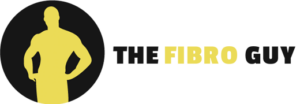- Breakthrough For Ehlers Danlos Syndrome and Endometriosis - 13 March 2025
- Does EDS get worse as you age? - 20 February 2025
- Can Ehlers Danlos Syndrome Cause Weight Gain/Loss? - 18 February 2025
The question “Do hypermobile people look younger?” has come up repeatedly. It may appear like an odd observation at first, but there’s actually a lot more going on here than meets the eye when we look into the science of connective tissues, skin elasticity, and collagen.
In this blog, we will delve into the intriguing link between hypermobility and looking young. We will discuss topics such as collagen’s function in facial features, the science behind skin elasticity, and the paradox of hypermobility’s ability to give the appearance of both youth and age.
All right, then, how about we begin this adventure through beauty, biology, and a hint of paradox?
This article covers:
ToggleWhat Is Hypermobility and Why Does It Matter?
People with hypermobility often come to mind when we picture someone pulling off awkward party tricks, such as bending their elbows in an unnatural way or being overly flexible. However, “bendy joints” are only one symptom of hypermobility. Hypermobility is a spectrum disorder; it can be benign, characterised by loose joints and no symptoms, or complex, as in Ehlers-Danlos Syndrome (EDS), where hypermobility is accompanied by skin fragility, chronic pain, and other major health problems.
Hypermobility is essentially defined as joints that move more than their usual range of motion. Rather than bending at the knees or hyperextending their elbows, you might observe an individual who deftly touches their palms to the floor.
It is common to highlight Ehlers-Danlos Syndrome (EDS) when discussing connective tissue disorders. Collagen is a protein that gives our skin, joints, and blood vessels their structure and elasticity. Collagen disorders make up EDS, which is more than just one condition. Joint instability, stretchy skin, and exhaustion are common symptoms of the hypermobile type (hEDS), a subtype that is among the most common. Vascular EDS (vEDS) is an extremely rare and dangerous variant of EDS in which the skin becomes very thin and transparent, and blood vessels become more vulnerable to damage.
How Collagen Works
The body’s structural protein collagen keeps every part in place. It gives your skin its structure, firmness, and that coveted plumpness of youth. It secures your joints and keeps them from moving around.
Collagen is frequently changed in hypermobility syndromes. When it comes to the appearance and ageing of someone with hypermobility, this changed collagen isn’t merely a supporting actor; it takes centre stage.
Overly elastic collagen may cause skin to retain its smoothness and lack of wrinkles for an extended period of time. However, paradoxically, it may also become delicate, easily bruised, and scarred in peculiar ways. The situation is analogous to a rubber band that exhibits excellent elasticity but immediately breaks at slight pressure.
Collagen has effects beyond just the skin though, and this is where things become intriguing. The fullness of your cheeks, the firmness of your jawline, and the severity of wrinkles are all shaped by this process as well.
The Art of Visual Appeal
Smooth, plump skin, less wrinkles, and a glow that defies time are the characteristics that come to mind when we envision an appearance of youth. Collagen plays a pivotal role in all of that.
Collagen, however, deviates from these norms in hypermobility. Skin may maintain its elasticity for a longer period of time rather than usual, delaying the onset of wrinkles.
However, thin skin on the hands, translucent veins visible under the surface, or scarring from apparently minor injuries are all symptoms of premature ageing that can be caused by fragile collagen, even though some areas appear remarkably youthful.
The paradox arises from the fact that hypermobility can have opposite effects: making a person look younger in some parts of the body while making them look older in others.
In light of this, how is hypermobility relevant to outward appearance?
The reason some hypermobile people may appear years younger, or older, than their peers could be because of collagen, the same substance that gives hypermobile people their distinctive flexibility.
Skin Elasticity: The Fountain of Youth?
The quality of having elastic skin is commonly mentioned when discussing skin that is considered youthful. The characteristic of firm, bouncy skin that permits it to immediately return to its original shape after being compressed or stretched. It’s the same mechanism that causes our skin to lose firmness and develop wrinkles and fine lines with age; it also explains why babies’ faces are so plump and smooth.
But skin elasticity doesn’t necessarily play by the book for people who are hypermobile. It’s an intriguing combination of genetics, biology, and, regrettably, occasionally, vulnerability.
The Origins in Biology
Two essential proteins, collagen and elastin, are responsible for the skin’s elasticity. Collagen is like a building’s steel framework; it’s sturdy, supportive, and structural. Contrarily, elastin is more akin to a system of interwoven elastic bands. The skin is able to stretch and reshape itself without sagging or ripping because of this.
People who experience hypermobility, especially those who suffer from disorders such as Ehlers-Danlos Syndrome (EDS), frequently have changes in either the synthesis or the structure of these proteins. Collagen fibres can become either too elastic or too weak due to mutations in genes related to collagen, like COL3A1 in Vascular EDS.
And what’s the outcome? Skin that changes its behaviour. Hyperelasticity describes some of these materials, which allow them to stretch more and then return to their original shape with an almost velvety smoothness. Sometimes it’s easily bruised, scarred, and torn even when subjected to light pressure.
The unusual skin profile seen in hypermobile people is a result of the delicate balance between skin elasticity and fragility.
Hyperelastic Skin
Hyperelastic skin is a characteristic of hypermobility, particularly in hEDS and other forms of EDS.
Hyperelastic skin often looks:
- Plumper and more youthful in texture
- Smoother and less prone to wrinkles
- Velvety and soft to the touch
Now we get into the tricky part: hyperelastic skin may look young, but it’s not necessarily as resilient as it seems.
The skin is usually more delicate under its smooth exterior. It may be more prone to tearing, bruise easily from minor trauma, or leave unusual scars. Some people’s hyperelastic skin is both a blessing and a curse: it gives the appearance of younger skin but is also more vulnerable to damage.
A Conundrum Regarding Very Thin, See-Through Skin
Skin that is both thin and translucent sits opposite hyperelastic skin. Because collagen mutations in vascular EDS (vEDS) cause skin to be thin and brittle, this paradox is more noticeable in this condition.
In these cases:
- Over time, areas of thin skin can start to look aged, even when the face maintains a youthful appearance.
- The skin, especially on the hands and chest, can appear almost see-through, with veins clearly visible underneath.
- Wounds might heal poorly, leaving scars that appear wide and thin.
This apparent contradiction explains why some people with hypermobility may receive contradictory feedback, such as “Your skin looks amazing!” followed by “But your hands look older than your age.”
Findings from the Research: What Does the Science Say?
Although there isn’t a conclusive study that says hypermobile people always appear younger, what research there is presents an interesting picture.
Collagen and Skin Elasticity: Research confirms that hypermobility-related changes to collagen structures can delay the onset of fine lines and wrinkles. On the flip side, collagen fragility can cause thin skin, increased bruising and scarring, and even premature ageing in some areas.
People with hypermobility don’t all have the same skin characteristics. While some people may be blessed with exceptionally tough skin, others may have to deal with persistently sensitive skin.
It’s important to remember that environmental and behavioural variables, such as sun exposure, diet, and skincare routines, greatly influence the expression of these characteristics.
Is hypermobile skin a magic potion that keeps you young?
The answer is complex, like most things related to hypermobility.
A more youthful appearance that persists into old age may be possible for some people due to the increased elasticity, which reduces the appearance of wrinkles and makes their skin plumper. On the other hand, some people may experience the opposite, early ageing symptoms in particular areas, due to their fragility and thinness, which might negate the youthful benefits.
At its most fundamental level, this paradox reflects the biological complexity and variability of hypermobility.
A Unique Aesthetic Signature
Facial characteristics are frequently the most prominent when determining an individual’s age. Our biological makeup predisposes us to see younger people as having less wrinkles, fuller cheeks, and smoother skin. The problem is that hypermobility can make all the usual rules irrelevant.
Collagen plays an important role in the structure and support of our faces, in addition to its roles in our skin, joints, and other connective tissues. Hypermobility patients, in whom collagen may be somewhat unreliable, present a particularly intriguing case.
Some hypermobile people appear to have struck it rich genetically, retaining their youthful radiance far into old age. Scars that reveal a different story, sunken eyes, or delicate skin are obstacles that some people must overcome.
Facial appearance in hypermobility is both intriguing and irritating because of this duality, the conflict between youthful features and indications of premature ageing.
The Face and Its Connective Tissues
To start, connective tissue is what holds our faces together. Collagen provides support, elastin allows for movement, and the two work together to form a framework that holds everything in place.
Hypermobility, can cause changes to this scaffolding. The collagen may not be as strong, as elastic, or as effective as it could be.
And what was the outcome?
Skin Texture: A shift towards a softer, velvety texture that often feels delicate to the touch.
Facial Symmetry: Subtle but gradual changes to the contours of the face, particularly noticeable around areas like the jawline and under the eyes, where collagen plays a crucial role in structural support.
Bone Alignment: In more severe cases, the laxity of connective tissue can subtly affect how facial bones are seated and aligned, leading to slight shifts in facial structure over time.
The Unexpected Benefits of Collagen Laxity
Many hypermobile people experience some unexpected benefits from collagen changes, which can make people say things like, “You look so young for your age!” or “You have such smooth skin!”
Here’s why:
Smooth Texture: Skin might stay soft and velvety for far longer than usual.
Fewer Wrinkles: Hyperelastic skin doesn’t crease or fold as easily, so fine lines and deep wrinkles might not appear as early as they do in others.
Fuller Cheeks: The natural laxity of facial collagen can give cheeks a plumper, more youthful appearance.
As a rare bright spot in the otherwise murky realm of hypermobility, this may seem like an aesthetic benefit to some. The flip side of hypermobility is, of course, always there.
The Negative: Skin Fragility, Under-eye Bags, and Scarring
Hypermobility has its advantages, like a more youthful appearance, but it also has its disadvantages.
The same collagen that makes skin elastic also makes it delicate and easily bruised or torn, and it heals slowly. Dark circles and hollowed eyes can be the result of a weakening of the connective tissue that holds the fat pads under the eyes in place. Scarring: Because the skin isn’t able to heal as well, wounds, surgeries, or even acne can leave scars that are wider and more noticeable.
If you’re going for a more youthful appearance overall, these features might seem out of place. You might get the impression that one part is young, smooth, and bright, but another part might be telling a completely different tale.
Paradoxically, it can be perplexing for both the individual going through it and those looking on from the sidelines.
Minimal Markings: The Nose, Lips, and Jawline
Surprisingly, hypermobility can affect more than just the skin. It can subtly mark other parts of the face as well:
Thin, Delicate Nose: The cartilage might be softer or thinner, subtly altering the nose’s shape over time.
Soft, Plump Lips: The lips may have a naturally fuller appearance due to increased elasticity in the surrounding skin.
Jawline Laxity: Connective tissue laxity can subtly change the contour of the jawline, especially as collagen naturally declines with age.
Unpredictability: The Role of the Individual
One thing to keep in mind regarding hypermobility is that every individual is unique.
Heredity: Your family history and the kind of collagen dysfunction you have will greatly influence the way your face develops.
Diet, water intake, sun exposure, and skin care routine are all lifestyle factors that can affect collagen’s behaviour.
Depending on the degree of the hypermobility, a person with mild joint hypermobility may not exhibit any outward facial changes, whereas a person with vascular EDS may see more noticeable alterations.
Because everyone with hypermobility is different, some may appear young and healthy while others may have obvious symptoms like sunken eyes or scarring.
It’s very individual, and it contributes to the complexity of conversations about hypermobility and appearance.
So, is it true that hypermobile people appear younger? This question lacks a clear-cut yes/no response.
Although hypermobility causes changes to collagen structure, one benefit is skin that is less prone to wrinkles, has a silkier texture, and keeps a hint of fullness in the face. A more youthful look can be achieved even in adulthood with features like plumper cheeks, smoother skin, and fewer fine lines.
Skin that is too thin or too translucent, more scarring, or sunken under-eyes are all symptoms of collagen fragility, which can hasten the ageing process overall. The connection between hypermobility and youthful appearance is complex because of this paradox.
Hypermobility does not, in fact, ensure that everyone will always have a “youthful glow” or that their ageing process will be linear. Variability, however, is what it produces; people’s looks are the result of a complex web of interactions between their genes, the way their connective tissues behave, and the decisions they make in their daily lives.
Understanding the why behind these traits is perhaps more important than whether hypermobile people look younger. Collagen has far-reaching effects on our health and beauty, but understanding these effects can help us make more holistic decisions about our self-care.
Whatever the case may be—wrinkle-resistant skin, a fuller face, or difficulties with fragile tissue—keep in mind that your appearance tells a story, and it’s a story that’s entirely yours—because of your hypermobility.
In comparison to being lumped into the “youthful” or “aged” categories, isn’t that an improvement?
Enjoyed Our Blog? Why Stop Here?
If you’ve found value in our posts, imagine what you’ll gain from a structured, science-backed course designed just for you. Hypermobility 101 is your ultimate starting point for building strength, stability, and confidence in your body.





